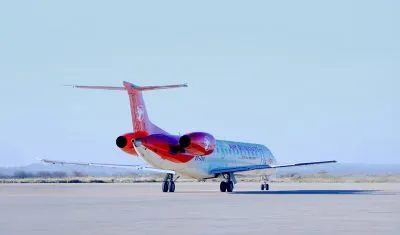Three fatal air crashes in the space of a few days have reawakened fears over African air safety. At the start of July, 10 people were killed in Ghana when a Nigerian Boeing 727 cargo plane missed the runway at Accra airport.
In the same month, a police helicopter crash in Kenya killed six people, including Internal Security Minister George Saitoti and his assistant minister Orwa Ojode. Finally and most shockingly, a passenger plane crashed into Iju, a Lagos suburb close to Murtala Muhammed Airport, killing all 153 passengers on board, as well as an unspecified number of people on the ground.
The McDonnell Douglas MD 83 aircraft burst into flames when flying from Abuja to Lagos. It was operated by Dana Air, which was launched in 2008 and which was one of the companies that have taken advantage of the recent growth in air travel in Nigeria.
An investigation now being undertaken into the causes of the accident will make use of the plane’s voice recorder. Dana Air’s entire fleet has been grounded and its aviation licence suspended, while the Nigerian Civil Aviation Authority (NCAA) undertakes a full assessment of its operating methods and aircraft. President Goodluck Jonathan has promised that improvements will be made to Nigerian air safety. Air Nigeria flights were also cancelled to allow all aircraft to undergo safety checks, although there was some doubt over whether this measure had been ordered by the NCAA or Air Nigeria management.
The company’s engineers had been on strike and so it was feared that safety checks on Air Nigeria aircraft might not have been up to date. The strike itself had been called because the engineers’ questioned whether sufficient funding was being given to maintenance work.An analysis of figures suggests that Africa’s aviation safety record is poor but improving and still far better than the continent’s road safety record. A total of 18 African air accidents led to fatalities in 2010, falling to eight in 2011. According to International Air Transport Association (IATA) airline safety spokesperson Günther Mattschnigg, the number of aircraft crashes worldwide is at its lowest level for many years, although the rate is nine times higher in Africa than the global average. Europe has recently experienced no accidents per million flights; North America 0.1 per million; Asia-Pacific 0.25 per million; South America 1.28 per million; the Middle East and North Africa 2.02 per million; and sub-Saharan Africa 3.2 per million.
However, it had been six years since Nigeria experienced an aviation disaster on the same scale as the Lagos crash. Indeed, the US aviation authority awarded Nigeria its highest safety rating, after reforms were introduced to ensure that Nigerian airlines were well capitalised and adequately inspected.
IATA’s regional director for Africa on safety, operations and infrastructure, Gaoussou Konate, said: “The main causes are well known. What is lacking is the strong will to address them in a systematic and effective way. Poor regulatory oversight at state level and crew proficiency problems, poor maintenance, lack of certified mechanics and reliable parts, poorly trained pilots, old navigational aids and weak operational control are some of the contributing factors.
The secretary general of the African Airlines Association (AFRAA), Elijah Chingosho, said that concern over safety “has prompted in recent years various stakeholders to coordinate their activities in areas such as safety training and pool expertise to help build a safety culture and adequate safety oversight capacity on the continent”.
A Strategic Improvement Action Plan, to be implemented in 2015, has been drawn up by IATA’s African member states and will be presented to the African Union. It aims at reducing the incidence of runway accidents; improving pilot training; developing more robust safety programmes; improving the quality of safety checks; and increasing the frequency of safety audits.
Want to continue reading? Subscribe today.
You've read all your free articles for this month! Subscribe now to enjoy full access to our content.
Digital Monthly
£8.00 / month
Receive full unlimited access to our articles, opinions, podcasts and more.
Digital Yearly
£70.00 / year
Our best value offer - save £26 and gain access to all of our digital content for an entire year!

 Sign in with Google
Sign in with Google 




